What are object pronouns? And how are direct and indirect object pronouns used in American English? And how are they used in Spanish? Pronouns can be confusing to comprehend at first. Although, once you learn the basics, it’s far easier to conceptualize their use in the modern English language.
What are object pronouns?
Let’s look at the definition of an “object pronoun” first.
| Form | Definition |
| Object pronoun | In linguistics, an object pronoun is a personal pronoun that is used typically as a grammatical object: the direct or indirect object of a verb, or the object of a preposition. Object pronouns contrast with subject pronouns. (Wikipedia) |
An object pronoun is a pronoun that is on the receiving end of an action being done to it.
E.G. If Bob buys an ice cream, then “ice cream” would be on the receiving end of the action that Bob does to it.
An object pronoun is just another type of personal pronoun that always happens to take on the objective case.
It can come in indirect forms (E.G. Alice gave Bob an ice cream). Or it can come in the direct form (E.G. Bob ate the ice cream).
To test your knowledge of object pronouns, click here.
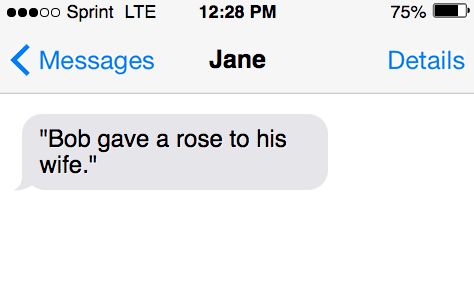
To understand object pronouns a little better, refer to the table below.
| Examples | Explanations |
| I sent a message to my professor. | This sentence has both a direct object, message, and an indirect object, the professor (or my professor). The example can be rewritten as I sent it to my professor. It is an object pronoun that has replaced the (direct) object noun message. |
| I sent my coworker a message. | Similar to the previous example, this has both a direct and an indirect object referenced. A message is the direct object as it receives the action of sent, and my co-worker is an indirect object as it receives the direct object i.e., a message. |
What Other Types of Pronouns are There?
Relative Pronouns
These are pronouns that relate one part of a sentence to the other.
Here, the word “who” relates to “the person who called me last night.”
You can always spot a relative pronoun when you see the words
Possessive Pronouns
These are pronouns that show the ownership or possession of something.
Example: Alice noticed that Bob’s dog was bigger than hers.
Here, the word “hers” indicates that Alice’s dog belongs to Alice.
You can spot a possessive pronoun when you see the words
- Mine
- Yours
- His
- Hers
- Theirs
- Its
- Ours
Reflexive Pronouns
These are pronouns that end in “-self” or “-selves” when the subject and object of a sentence are the same.
Example: I cut myself when cooking dinner yesterday.
Here, “I” and “myself” both refer to the same person.
You can spot a reflexive pronoun when you see the words
- Myself
- Yourself
- Herself
- Himself
- Oneself
- Ourselves
- Themselves
- Yourselves
Demonstrative Pronouns
These are pronouns that point to specific things.
Example: This is an apple.
The same words are used as demonstrative adjectives when they modify nouns and pronouns.
Example: This apple.
You can spot a demonstrative pronoun when you see the words
- This
- That
- There
- Those
- These
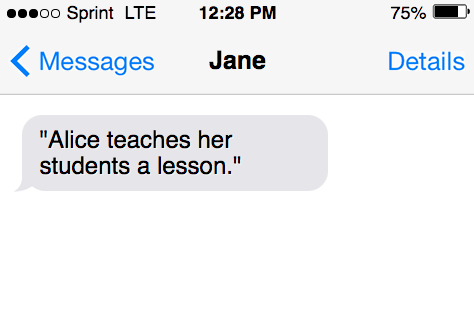
Interrogative Pronouns
These are pronouns that are used to ask questions.
Example: Who ate the ice cream?
Whose dog is this?
What is Bob’s last name?
Here, we can see that the words “who,” “whose,” and “what” are being used to ask questions, or to interrogate someone.
As a general rule, pronouns usually replace nouns in sentences. In interrogative pronouns, they replace whoever or whatever the answer to the question is. The “Who” in “Who ate the ice cream” can refer to Bob or Alice. So we can see how the pronoun in this interrogative pronoun is replacing the answer to the question.
You can spot an interrogative pronoun when you see the words:
- Who
- What
- Where
- When
- Why
- Whatever
Indefinite Pronouns
These are pronouns that refer to a person or thing without being specific about what they are referencing.
Example: Can anyone help me?
Here, “anyone” could refer to any person in the group being addressed.
You can spot an indefinite pronoun when you see the words:
- Someone
- Anyone
- Somebody
- Somewhere
- Something
- Anybody
- Anywhere
- Anything
- No one
- Nobody
- Nowhere
- Everyone
- Everybody
- Everywhere
- Everything
- Each
- None
- Few
- Many
To help understand better, refer to the table below.
| Singular (-s) | Singular (-s) | Plural | Either |
| Each | Anyone | Both | All |
| Either | Someone | Few | Most |
Personal Pronouns
These pronouns are used to replace the names of people, places, or things in a sentence.
Example: I bought some ice cream to eat.
Here, “I” refers to Bob, who we saw previously share his ice cream with Alice. Because the “I” is replacing his actual name, it qualifies as a personal pronoun.
You can spot a personal pronoun when you see the words:
- I
- You
- He
- She
- We
- They
- Him
- Her
- She
- Us
- Them
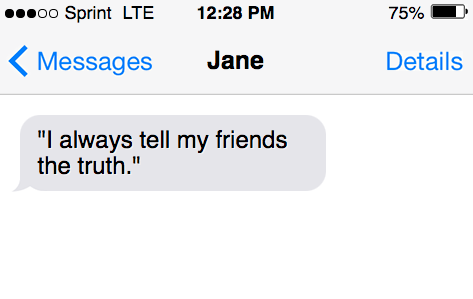
Subject Pronouns
These are pronouns that perform the action in a sentence.
Example: He gave Alice ice cream.
Here, “He” refers to Bob, the sentence’s subject.
You can spot a subject pronoun when you see the words:
- I
- You
- We
- They
- He
- She
- It
- One
To read more examples of subject pronouns, read this page.
Reciprocal Pronouns
These are pronouns that are used to show two or more people performing an action of some kind.
Example: Alice and Bob gave each other gifts to celebrate the holiday season.
Here, the words “each other” qualify as the reciprocal pronoun.
As a general rule, reciprocal pronouns are used any time something is given or performed. It is used to denote mutual action.
You can spot a reciprocal pronoun when you see the words:
- Each other
- One another
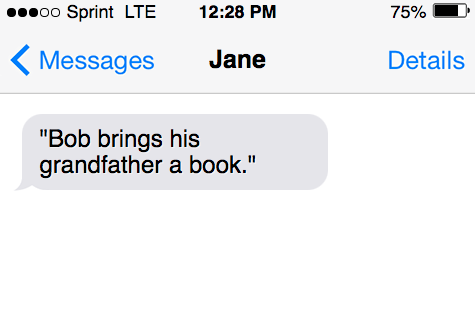
Intensive Pronouns
These pronouns are just like reflexive pronouns but are used to emphasize the subject or the antecedent of the sentence instead.
Example: I would like to hear the man himself speak.
Here, the word “himself” is what qualifies this as an intensive pronoun.
To understand better, refer to the table below.
| Person | Pronoun |
| First-person | Myself |
| Second-person | Yourself |
| Third-person | Himself, herself, itself |
What are Direct Object Pronouns?
A direct object is the main person or thing in a sentence that is on the receiving end of an action. You can identify the direct object in a sentence by asking yourself who or what the sentence is talking about. We use these to avoid repeating words in a sentence and because they make the sentence sound more natural.
Examples in Sentences
- “The couple ate ice cream.”
- “The family rode the rollercoaster.”
- “The officers breached the building.”
- “The drivers crossed the finish line.”
What are Indirect Object Pronouns?
Indirect object pronouns are similar to direct object pronouns, but are also used when the actual object is stated in the sentence.
Here, you don’t need to eliminate the indirect object to use a pronoun. You must use an indirect object pronoun whenever there is an indirect object present, but you can choose to use only the pronoun if the object is conspicuous.
Most sentences in English tend to follow a subject-verb-object order.
Examples in Sentences
- “Bob gave a rose to his wife.”
- “Alice teaches her students a lesson.”
- “I always tell my friends the truth.”
- “Bob brings his grandfather a book.”
For more examples of object pronouns, read this page.
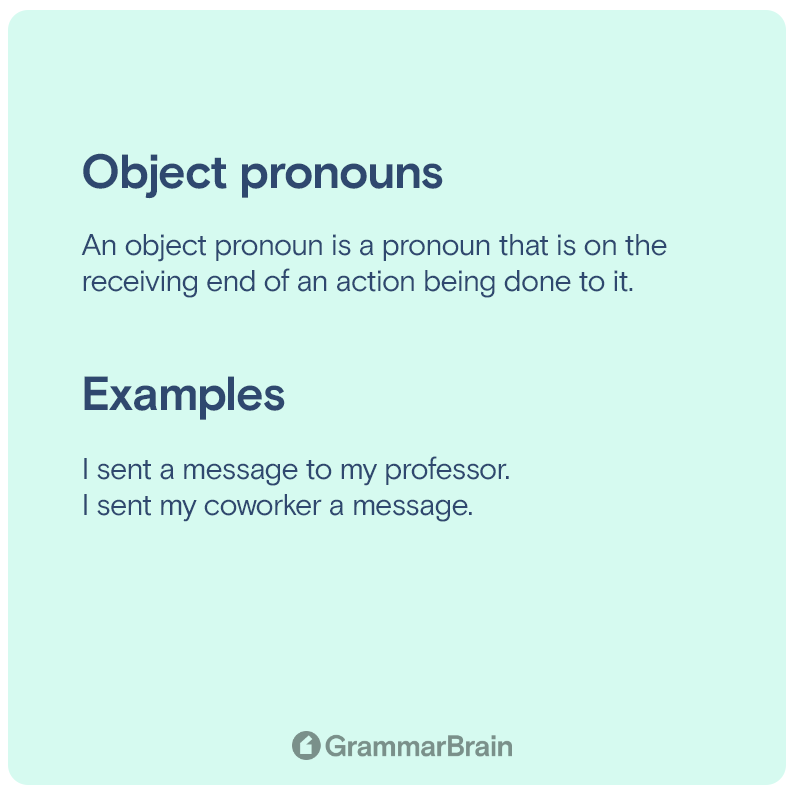
What Are Object Pronouns In Spanish?
Unlike English, Spanish often makes a point to distinguish indirect object pronouns from direct object pronouns.
In English, you would use “it,” “them,” “her,” and “him,” but in Spanish, you use “lo” and “la” as direct object pronouns instead.
Objects in Spanish can be identified in masculine and feminine terms, so using object pronouns comes with extra rules.
Examples In Sentences
In English, you would write “Bob writes a letter,” where “Bob” is the subject and “letter” being the thing receiving the action.
In Spanish, you would write “Bob escribe una carta” instead.
In English, you would substitute the word “letter” for the word “it” if you wanted to substitute the noun with a pronoun.
In Spanish, you have two different ways of saying “it”: The masculine way and the feminine way.
In English, you would express this as “Bob writes it,” which follows the traditional subject-verb-object format commonly used in English.
In Spanish, you would say “Bob la escribe” instead, since pronouns come after the subject but before the verb.
People and objects are both indicated by the word “le”.
When saying “The father gives the bride a gift,” the word “gift” is the thing receiving the action, and the direct object is the “bride” who receives the gift.
When saying “The father gives the bride away,” the “bride” would be the one receiving the action. Since “bride” is a feminine word in Spanish, you would use the word “la” as its substitute.
Difference Between Subject And Object Pronouns
Simply put, subject pronouns take the place of the subject of the sentence.
In the sentence, “The man traveled with his friends,” the words “the man” would be the subject.
Object pronouns replace the object of a sentence.
In the above sentence, the object of the sentence is “friends.”
The key to differentiating between the subject and object pronouns is to ask yourself what the subject is and to whom the subject is performing the action.
How to Identify an Object Pronoun
You can spot an object pronoun by looking for the words
- Me
- You
- Him
- Her
- Whom
- Us
- Them
Since the English language usually follows the order of subject-verb-object in sentence construction, you can look towards the second half of your sentence to find your object. Whatever the subject is acting on usually tends to be the object.
How to Identify a Subject Pronoun
You can spot a subject pronoun by looking for the words
- We
- You
- He
- She
- It
- They
The subject is always going to be a person, thing, place, or idea. Try reading the sentence aloud. Instead of saying the person, thing, place, or idea, replace it with any of the subject pronouns instead and check if the sentence still makes logical sense.
More on pronouns
More resources on pronouns:
Sources
Inside this article
Fact checked:
Content is rigorously reviewed by a team of qualified and experienced fact checkers. Fact checkers review articles for factual accuracy, relevance, and timeliness. Learn more.
Core lessons
Glossary
- Abstract Noun
- Accusative Case
- Anecdote
- Antonym
- Active Sentence
- Adverb
- Adjective
- Allegory
- Alliteration
- Adjective Clause
- Adjective Phrase
- Ampersand
- Anastrophe
- Adverbial Clause
- Appositive Phrase
- Clause
- Compound Adjective
- Complex Sentence
- Compound Words
- Compound Predicate
- Common Noun
- Comparative Adjective
- Comparative and Superlative
- Compound Noun
- Compound Subject
- Compound Sentence
- Copular Verb
- Collective Noun
- Colloquialism
- Conciseness
- Consonance
- Conditional
- Concrete Noun
- Conjunction
- Conjugation
- Conditional Sentence
- Comma Splice
- Correlative Conjunction
- Coordinating Conjunction
- Coordinate Adjective
- Cumulative Adjective
- Dative Case
- Determiner
- Declarative Sentence
- Declarative Statement
- Direct Object Pronoun
- Direct Object
- Diction
- Diphthong
- Dangling Modifier
- Demonstrative Pronoun
- Demonstrative Adjective
- Direct Characterization
- Definite Article
- Doublespeak
- False Dilemma Fallacy
- Future Perfect Progressive
- Future Simple
- Future Perfect Continuous
- Future Perfect
- First Conditional
- Irregular Adjective
- Irregular Verb
- Imperative Sentence
- Indefinite Article
- Intransitive Verb
- Introductory Phrase
- Indefinite Pronoun
- Indirect Characterization
- Interrogative Sentence
- Intensive Pronoun
- Inanimate Object
- Indefinite Tense
- Infinitive Phrase
- Interjection
- Intensifier
- Infinitive
- Indicative Mood
- Participle
- Parallelism
- Prepositional Phrase
- Past Simple Tense
- Past Continuous Tense
- Past Perfect Tense
- Past Progressive Tense
- Present Simple Tense
- Present Perfect Tense
- Personal Pronoun
- Personification
- Persuasive Writing
- Parallel Structure
- Phrasal Verb
- Predicate Adjective
- Predicate Nominative
- Phonetic Language
- Plural Noun
- Punctuation
- Punctuation Marks
- Preposition
- Preposition of Place
- Parts of Speech
- Possessive Adjective
- Possessive Determiner
- Possessive Case
- Possessive Noun
- Proper Adjective
- Proper Noun
- Present Participle
- Prefix
- Predicate



